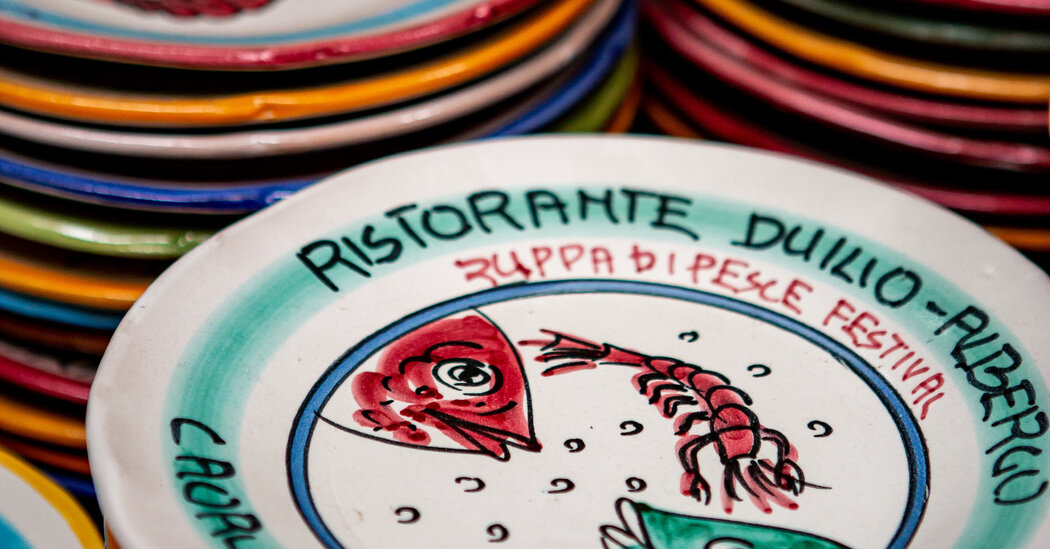For his 73rd birthday in April, Felice Macchi had lunch at La Bettola Del Gusto, a restaurant in Pompeii, Italy, with a focus on seafood.
He ordered the house specialty: spaghettoni, a thicker spaghetti, in a fermented anchovy sauce with black truffles and butter made with milk from water buffalo native to the Mediterranean region. The meal came on a ceramic plate with a whimsical hand-painted design depicting the spaghettoni dish and a smoking volcano, a nod to nearby Mount Vesuvius.
Mr. Macchi finished his meal — he said it was “excellent” — but did not leave the restaurant empty-handed. Instead of leftovers, he took home the plate his pasta was served on.
It was a new addition to a collection he has amassed of that type of Italian tableware, known as Buon Ricordo plates. He has hundreds of them, many of which he eats on. Others decorate hallways, the kitchen and the dining room of his home in Varese, Italy.
Since 2022, Mr. Macchi has been the president of the Buon Ricordo Plate Collectors Association. The group, which has about 400 members in Europe and South America, is planning an exhibition of the plates at the Fondazione Sant Elia, a museum in Palermo.
When asked why he started collecting the plates, Mr. Macchi, an insurance agent, answered romantically.
“Why do we fall in love with a woman?” he said.
The tableware was introduced as a marketing tool for an association of regional Italian restaurants, called the Buon Ricordo Union, formed in 1964. It can still be found at the union’s restaurants — as well as at Italian flea markets and antique sellers, design trade shows like Maison et Objet in Paris and high-end décor stores like ABC Carpet & Home in New York.
At the time the plates were introduced, local Italian cuisines were mostly prepared at home and largely seen as not worthy of serving at restaurants across Italy, many of which had French-influenced menus instead.
The idea for Buon Ricordo, which translates to “good memory” in English, came from Dino Villani, an Italian advertising executive who, among other accomplishments, founded the beauty contest now known as Miss Italy. He proposed the restaurant union as a way to promote and preserve regional Italian cooking at establishments in the country.
Restaurant owners who wanted to join had to show that they were using regional recipes and ingredients. Joining the union has also required an annual fee; this year, it was 1,000 euros. In the 1980s, it started to accept restaurants…
Click Here to Read the Full Original Article at NYT > Travel…
